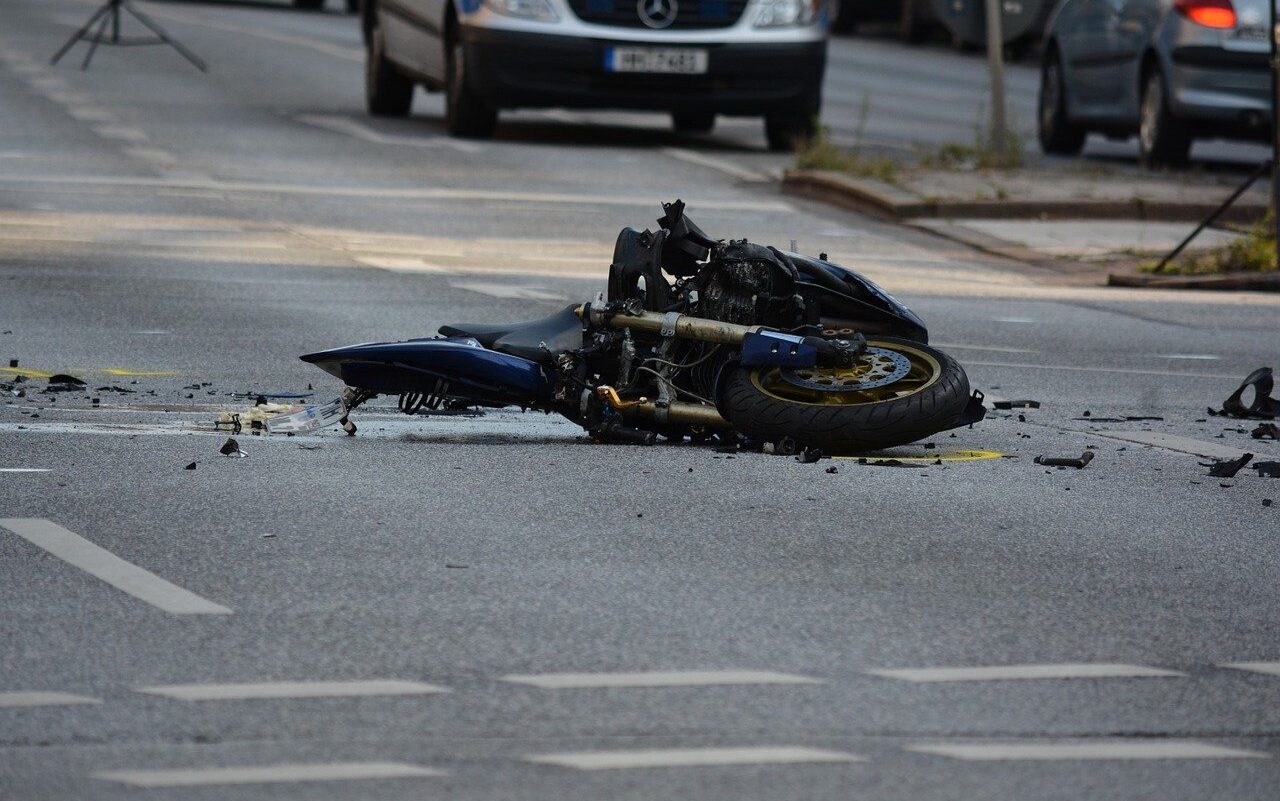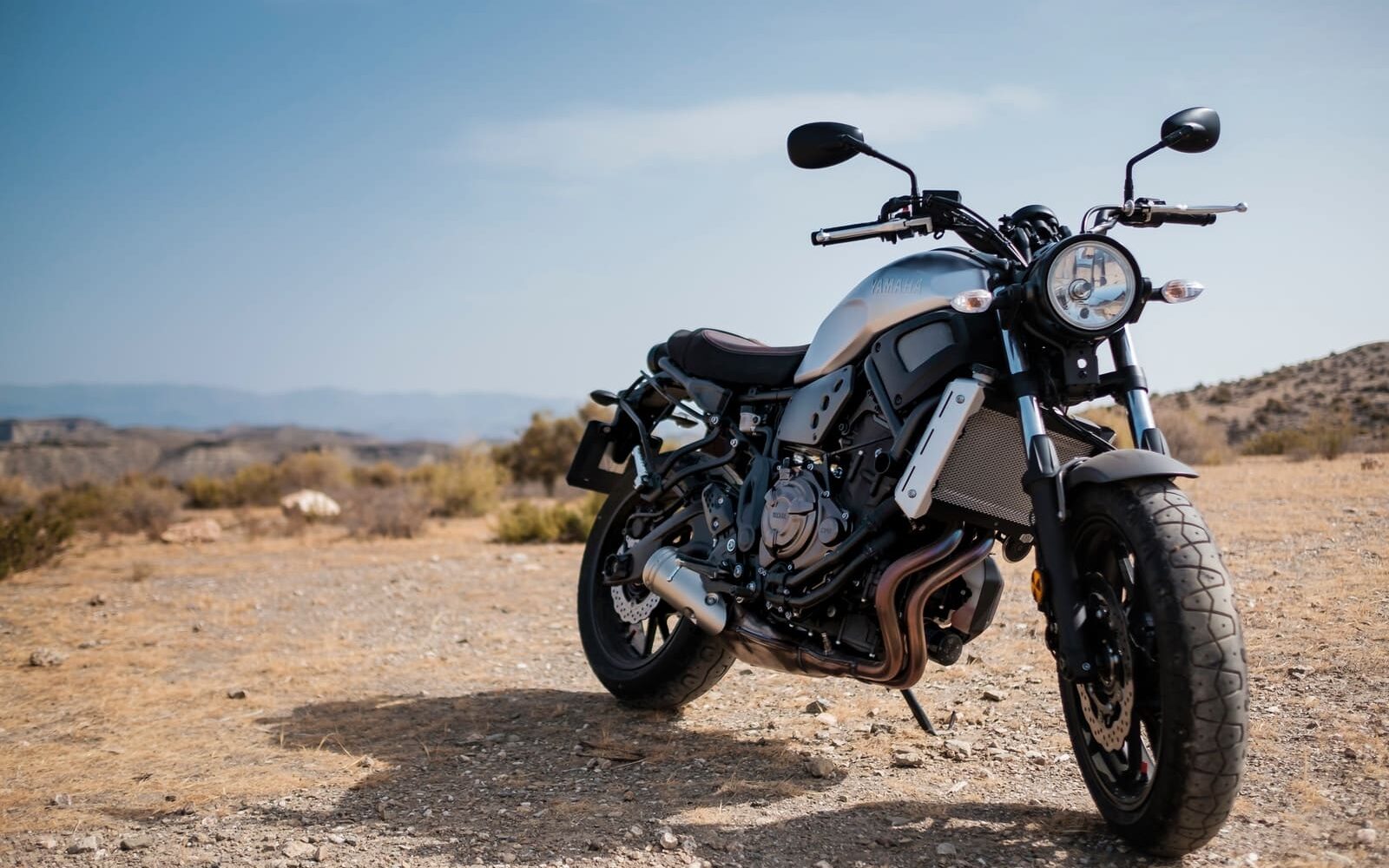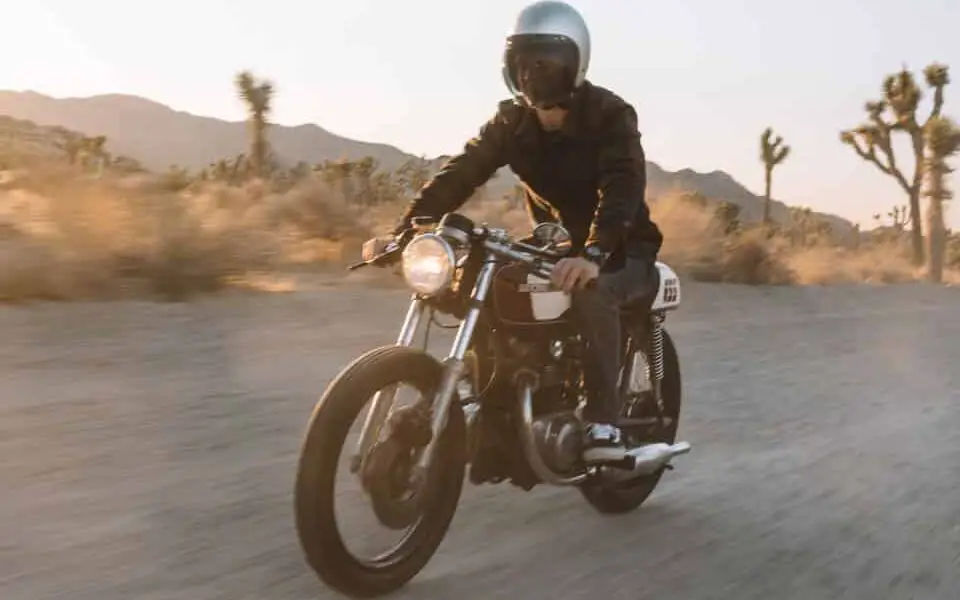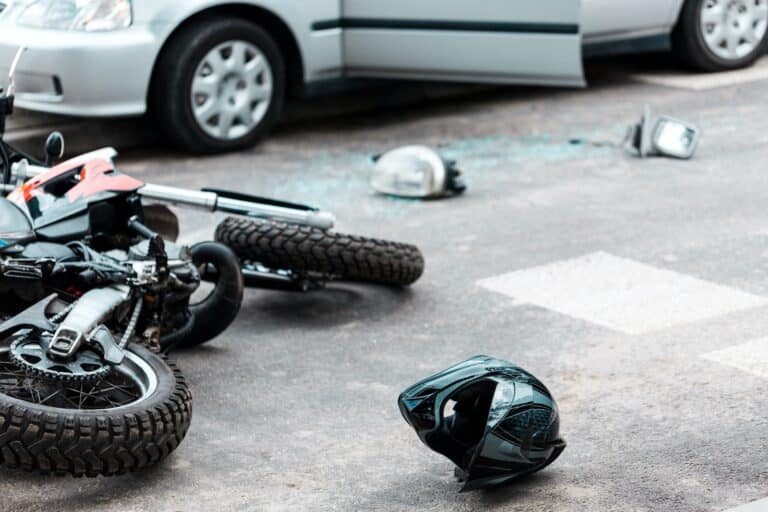For a beginner, dropping a motorcycle is one of the most daunting things that can happen to your bike. And not just at high speeds, even at crawling speeds it is a scary situation.
Honestly, it’s pretty embarrassing & can cause serious injury to drop your bike at zero mph. And if dropping 300 pounds of metal on your ankle isn’t bad enough, not being sure whether or not your bike has permanent damage after a drop is especially concerning for a rider’s shattered confidence.
For a new rider on their first bike, slow speed maneuvers can be overwhelming. There is no particular reason as to exactly what causes a motorcycle to fall while riding. Experienced riders with the same bike may not fall down while riding. Crash bars are installed to elevate motorcycle safety. An experienced rider is well aware of the tips and tricks of riding a motorcycle. They know when and how to apply the front brake, understand the tipping point, know how to take U turn, and know to ride a motorcycle at slow speeds. The parking lot and a slow speed turn are common occasions for new riders to drop their motorcycle. If a rider is carrying someone in the passenger seat then they have to maintain slow speeds and take careful turns at the same time.
There are engine guards to protect the bike engine from damage if it falls. There is ample space to practice a U turn in a gas station. Learn to control the front wheel, apply your left leg correctly, learn how to take control with your left hand, apply the foot peg properly, use the brake lever often at low speeds and use the clutch lever. Keep a check for any friction zone, stop sign, heavy traffic, and learn the proper applications of the back brake from a qualified instructor. They help you to get all your motorcycle lessons learned and prevent major damage to you and your bike. If you started riding weeks ago then higher speeds can give you a sickening feeling. Dropping the bike a couple times is a learning experience to improve your skill level.
In this article, we are going to cover:
- How to prevent dropping your motorcycle
- What to do if a Motorcycle drops
- Identify if your bike has sustained permanent damage from a drop
How to Overcome Fear of Dropping a Motorcycle During Solo Travel?
One of the most common fears for solo motorcycle travelers is the apprehension of dropping their bike. However, with the right techniques, overcoming fears of solo motorcycle travel is possible. Developing strong balance and control skills, practicing emergency stops and turns, and gradually building up confidence through regular riding can all help alleviate this fear. Remember, gradually overcoming fears of solo motorcycle travel takes time and practice, but it is achievable.
How to prevent dropping your motorcycle

There are a few things you can do to prevent dropping your motorcycle. But ultimately what these all come down to is having good habits. Creating muscle memory around your maneuvers, riding & motorcycle etiquette will save you in the long run.
Always double check your stand is fully extended

This one took me out on the first day I had my new bike. You come to a complete stop, kick your stand out and go to put your foot down. Except, you don’t realize that your stand is still up and you quickly realize this while your bike falls over. Double-checking your stand is out will save you.
Give your bike a quick check over before every ride
Honestly, this process takes me around 20-30 seconds. Make a habit to check your brakes are working, mirrors are correct, and check the small things like blinkers are off before every ride.
The reason this is so important is that if you realize after you take off, and you’re trying to adjust, let’s say, your mirrors after you’ve left, you’ll be adjusting while riding. This heavily increases your chance of falling, and if you’ve already started accelerating, it can be difficult to regain control and avoid or minimize the damage of a fall.
Always give yourself enough space when following another person on a bike

This has happened to me more times than I’d like to admit. But hasn’t caused me to come off the bike yet! Giving yourself enough space between you and the rider in front of you is so important. This way if they apply the brake suddenly or swerve, you have enough time to react and apply your brakes without hitting the person in front of you.
Staying within your limits
As riders, it is so easy to become overconfident and push our limits. This can be especially dangerous when you just got your motorcycle license or are new to riding. Take your time getting comfortable with your bike in all conditions before pushing the limits of what you’re capable of doing on a bike.
Wear protective gear
Even if you do all the right things, chances are, you’ll still drop a motorcycle once or twice. As someone who has dropped a bike a few times, wearing protective gear, especially motorcycle shoes makes a huge difference. Otherwise, dropping a bike can be very dangerous.
What to do if a Motorcycle Drops
There are a couple of different methods that riders use to save their bikes in the event of a fall, but ultimately it comes down to making contact with as much of your body as you can on the ground. The main goal is to keep the bike upright, which makes rolling to your feet easier.
And remember, if you do go down in a crowded area and others are close to the bike when it falls, make sure you warn them not to stand or walk near where the bike lands – it could be unstable and cause more damage.
Here are some tips on what to do during a motorcycle drop:
Stay on the Bike as long as possible before the point of no return
Understanding the point of no return is a very important concept when if you drop a motorcycle. This is the point in which you have been unable to stop the bike from tipping over.
With this knowledge of the point of no return, try to stay on your bike as long as possible! Think about it this way, would you prefer to drop your bike at 50 mph or 30 mph? Every second that you stay on the bike and brake the safer your fall off the bike will be.
Extend your braking period as much as possible.
Keep Calm
Once you’ve hit the point of no return, the best thing you can do is relax your body. It may seem difficult, since dropping a bike is an unexpected event, but it will help avoid throwing your leg over the bike and pushing yourself away from the bike while it’s falling.
Don’t let the bike land on you
Once you’ve passed the point of no return, try to get yourself away from the bike. This will help avoid the bike landing on top of you and causing more damage.
Don’t hold the throttle
It might sound crazy, but the number of people that twist and hold onto the throttle for dear life when their bike starts tipping is astounding. If you twist the throttle while you’re tipping off the bike it will only make it worse and is extremely dangerous.
If you’re falling, let go of the throttle.
Identify if your bike has sustained permanent damage from a drop
Identifying if your bike has sustained damage from a drop is a really difficult task. but let’s give this a try!
For drops crawling speed and below (Below 7mph)
My general habit for what to do after dropping a bike from a crawling pace is to:
- Hit the motorcycle’s kill switch
- Check I’m ok
- Am I in immediate danger from other cars or vehicles? If so get out the way, if not move to step 4
- Deadlift the bike up & use the stand to rest the bike
- Walk around the bike to make sure there is no obvious damage including fuel or oil leaks, bent brake levers or handlebars, or anything else that may impede rideability.
- Turn bike on and let it run for 30 seconds before actually riding. While you wait listen to the sound of the bike, you can tell a lot from the sound of your bike. You’ll know if there is anything wrong.
For drops at speed (Above 7mph)
My general habit for what to do after dropping a bike from 7mph and above is to:
- Hit the motorcycle’s kill switch
- Check I’m ok
- Am I in immediate danger from other cars or vehicles? If so get out the way, if not move to step 4
- Make sure no one was hurt
- Move bike to the side of the road and rest it on the stand
- Walk around the bike to make sure there is no obvious damage including fuel or oil leaks, bent brake levers or handlebars, or anything else that may impede rideability. But do not try to start the bike.
- Call roadside assistance
Any time you drop a motorcycle above 10mph there is a chance that something may be critically wrong with the bike and you should call roadside assistance. Practicing to park your own bike in a parking lot helps to improve your control over the rear tire. The parking spot is a safe space for long time riders who understand the value of a dropped motorcycle. If you are riding in slow motion, new riders will experience their first drop at a low speed which leaves behind a few scratches. Lost balance, oncoming traffic are some of the other reasons to tip over. Keep a check on the gas pump to ride safe. For a bigger bike, if the rider lost control then a bike fall is natural. It is easy to ride fast on a small bike but a skills test is essential for all riders. Beginners should start riding again if they tip over, especially if they have their own ride. While slow maneuvers are risky, practice can help to master them correctly. The right foot can help to control the front tire pressure. You need to make sure the bike has enough gas as well. The side stand and handle bars of a motorcycle help to prevent riders from falling down easily. The best answer for a lesson learned is more practice.






